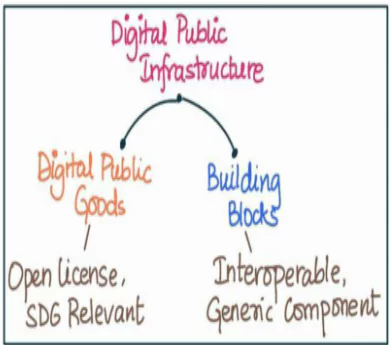Answer:
|
How to approach the question
- Introduction
- Define Digital Public Infrastucture (DPI) and write about evolution of Digital Public Infrastructure in India briefly.
- Body
- Write how the evolution of Digital Public Infrastructure can potentially exacerbate social inequalities.
- Write strategic measures that should be taken to prevent digital exclusion and ensure equitable access to technology.
- Conclusion
- Give appropriate conclusion in this regard.
|
Introduction
Digital Public Infrastucture (DPI) refers to digital solutions that enable basic functions essential for public and private service delivery. Examples include Aadhar, UPI etc.
India’s digital public infrastructure has evolved significantly over the years, beginning with the computerization of public services, followed by the introduction of the Aadhaar system. Further, the launch of the Digital India program propelled developments like UPI, DigiLocker, and the National Digital Health Mission.
Body
Evolution of Digital Public Infrastructure can potentially exacerbate social inequalities in the following ways
- Digital Divide: For example, during the COVID-19 pandemic, many students in rural India could not attend online classes due to a lack of internet connectivity, resulting in a widening education gap. Example- Just 14.9% rural households having access to the internet against 42% households in urban areas. (NSS 2017-18)
- Lack of Digital Literacy: Many, especially the elderly in rural areas, faced difficulties using the Co-WIN portal for COVID-19 vaccine registration due to a lack of digital literacy. Example– Only 38% of households in the country are digitally literate.
- Exclusion due to Aadhaar: Instances of Aadhaar biometric failure have resulted in exclusion from services. Manual laborers and the elderly have particularly faced challenges accessing Public Distribution System (PDS) benefits due to fingerprint mismatches. Example– 1.4 crore ration cards got cancelled when linked with Aadhar Card.
- Lack of Infrastructure: In areas like Dantewada in Chhattisgarh, where electricity supply is irregular, accessing digital services consistently becomes challenging. This often leads to digital exclusion of people living in these areas.
- Health Inequalities: The potential of the National Digital Health Mission (NDHM) could be limited if people in rural areas cannot access digital health records or online consultations due to lack of internet connectivity.
- Data Privacy Concerns: DPI involves the collection and storage of vast amounts of personal data. Those who are more tech-savvy may be better equipped to understand privacy risks and take measures to protect their data, while others may unknowingly expose themselves to privacy breaches. Example- AIIMS Delhi cyber attack 2023.
Strategic measures that should be taken to prevent digital exclusion and ensure equitable access to technology

- Improving Infrastructure: Government should enhance digital infrastructure, especially in rural and remote areas. Projects like BharatNet, aiming to provide internet connectivity to all gram panchayats, need to be expedited.
- Local Language Interfaces: Digital platforms should provide local language interfaces to overcome language barriers. A good example is the recent move by National Health Authority to offer Co- WIN in 12 languages.
- Accessible Design: Digital platforms should adhere to universal design principles to accommodate users with different abilities. Features like text-to- speech can assist visually impaired users.
- Community Networks: Promoting community networks can provide affordable, locally managed internet access in areas not served by mainstream providers, like the community network set up by the Digital Empowerment Foundation in Tilonia, Rajasthan.
- Public-Private Partnerships (PPPs): PPPs can be leveraged to expand digital access. For example, the partnership between BSNL and Facebook for Express Wi-Fi service aims to provide affordable internet access.
- Gender Inclusion: Initiatives should be taken to bridge the gender digital divide. For example, programs like Internet Saathi by Google and Tata Trusts have trained rural women to use the internet.
Conclusion
As India continues its digital evolution, strategic measures can ensure that no one is left behind. With infrastructure improvements, enhanced digital literacy, and inclusive policies, the digital public infrastructure can serve as a powerful equalizer, heralding a new era of inclusive growth and prosperity.
To get PDF version, Please click on "Print PDF" button.


Latest Comments